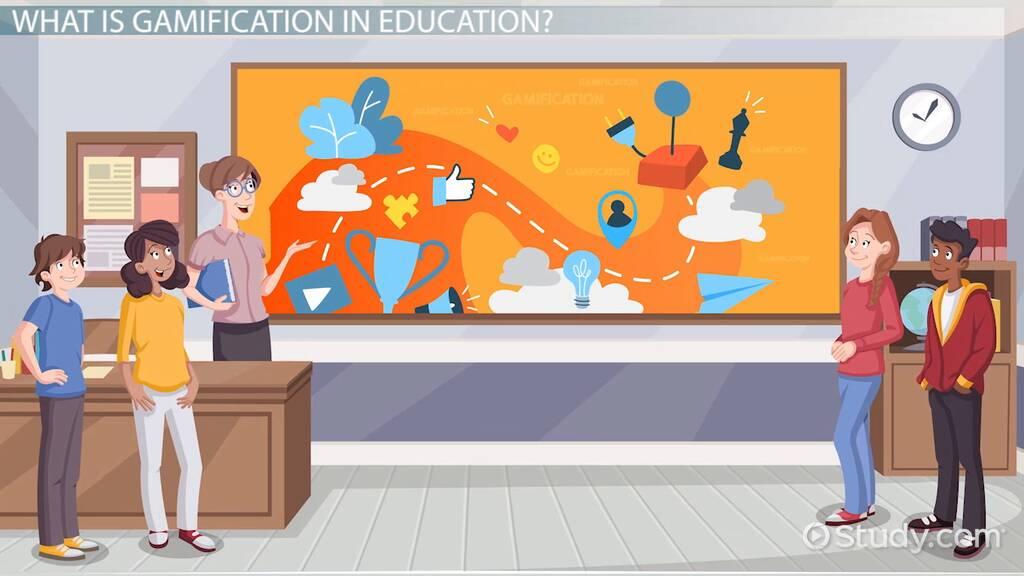Unlocking Tomorrow’s Classrooms: The Future of Educational Gamification Explained
Educational gamification is rapidly transforming the modern classroom, merging learning with play to create dynamic, engaging, and effective educational experiences. As technology evolves, schools and educators are leveraging game-based strategies to unlock greater student engagement and achievement.In this thorough guide, we’ll explore the future of educational gamification, its profound benefits, real-world examples, and actionable insights for teachers and institutions ready to embrace this transformative trend.
What Is Educational Gamification?
Educational gamification refers to the integration of game design elements—such as point scoring, competition, and reward systems—into learning environments. By reimagining lessons as interactive, playful challenges, educational gamification motivates students, fosters engagement, and enhances knowledge retention. This approach is rapidly gaining traction across K-12, higher education, and corporate training contexts.
- Game mechanics: Points, levels, badges, and leaderboards.
- Motivational tools: Immediate feedback,collaborative quests,progression tracking.
- Digital platforms: Learning management systems (LMS) with game features, gamified mobile apps, and online educational games.
The Rise of Gamification in Modern Classrooms
Technological advancements, coupled with a deeper understanding of cognitive psychology, have paved the way for game-based learning. Educators increasingly recognize the power of gamification to motivate diverse learners, personalize educational journeys, and foster critical thinking. As gamification in education moves from trend to norm, tomorrow’s classrooms are evolving into immersive, learner-centered ecosystems.
Key drivers Fueling Educational gamification
- Widespread availability of tablets, smartphones, and interactive whiteboards.
- Robust online platforms supporting multimedia and instant feedback.
- Demand for personalized and self-paced learning experiences.
- Research-driven evidence of improved educational outcomes.
Benefits of Educational Gamification
Implementing gamification strategies in classrooms is associated with a wide range of benefits. These extend beyond academic achievement and touch on social, emotional, and cognitive advancement.
Top Advantages for Students and Educators
- Enhanced Engagement: Game elements captivate learners, reducing boredom and increasing participation.
- Motivation & Achievement: Rewards and progression systems drive persistence and ambition.
- immediate Feedback: students receive real-time performance insights, enabling swift betterment.
- Collaboration & Social Skills: Team quests and competitions encourage dialog and teamwork.
- Personalized learning: Adaptive paths and challenges cater to individual strengths and weaknesses.
- Retention & Cognitive Skills: Interactive storytelling and problem-solving improve memory and critical thinking.
The Future of Educational Gamification: What’s Coming Next?
As we look toward the classrooms of tomorrow, the future of educational gamification is brimming with innovation:
Emerging Trends Shaping Gamified Education
- Artificial Intelligence (AI): AI-driven platforms create custom game paths, adapt content, and analyze learning patterns for personalized education.
- Virtual Reality (VR) & augmented Reality (AR): Immersive environments allow students to explore worlds, conduct experiments, and interact with simulations.
- cross-Platform Integration: Seamless syncing across devices lets learners continue progress anywhere, anytime.
- Data-Informed Teaching: Gamified analytics offer deep insights into student progress and engagement.
- Collaborative Global Communities: Online gamified classrooms foster intercultural collaboration and peer-to-peer mentorship.
Tomorrow’s Classroom Transformation
Tomorrow’s classrooms will resemble vibrant learning hubs where students shape their own educational journeys, guided by interactive, game-based experiences and empowered by digital tools.Customary lecture-based instruction will give way to dynamic quests, workshops, and real-time problem-solving.
Case Studies: Educational Gamification in Action
Duolingo: Gamifying Language Learning
Duolingo has revolutionized language acquisition through a gamified mobile app. Using streaks, achievement badges, and leaderboards, Duolingo keeps learners motivated and engaged, setting a global standard for game-based learning.
Classcraft: Social Learning Through Gameplay
Classcraft transforms classroom management into a multiplayer adventure. Students collaborate, earn points, and complete quests while teachers monitor engagement in real time. Results include increased motivation, better attendance, and higher academic achievement.
Minecraft Education Edition: Building STEAM Skills
Minecraft’s Education Edition combines creative sandbox gameplay with curriculum-based content. Students work together to build, experiment, and solve problems—developing STEM, communication, and collaboration skills in a playful, immersive habitat.
Practical Tips for Educators: Implementing Gamification Effectively
Ready to bring gamified learning to your classroom? Here are actionable strategies for triumphant implementation:
- Start Small: Introduce one or two game elements, such as a points system or leaderboard, before scaling up.
- Align with Learning Objectives: Ensure game mechanics reinforce curriculum goals,not distract from them.
- use Student Feedback: Involve learners in designing gamified experiences to boost ownership and motivation.
- Blend Digital and Offline Play: Balance screen time with hands-on, collaborative projects and board games.
- Track Progress: Utilize data to identify learning gaps and refine game strategies.
- Provide Meaningful Rewards: Recognize effort, improvement, and collaboration—not just winning.
First-Hand Experiences: Voices from the Classroom
“Introducing gamification into my lessons transformed disengaged students into active participants. Watching their excitement as they reached new levels and celebrated achievements was incredibly rewarding. Learning is now a collaborative adventure in my classroom!”
— Sarah T., Middle School Math Teacher
“Minecraft Education Edition brought our science unit to life. My students built models, tested theories, and learned teamwork in ways I never thought possible.”
— Mark L., Fifth Grade Science Teacher
Conclusion: Embracing the Future of Game-Based Learning
As education propels into a digital future, gamification in classrooms stands at the forefront of transformation. By integrating game mechanics, educators can foster deeper engagement, spark curiosity, and personalize learning in ways traditional teaching cannot.Whether through immersive platforms, mobile apps, or collaborative quests, the path to unlocking tomorrow’s classrooms lies in creative, playful, and student-centered experiences.
For teachers, administrators, and parents alike, embracing educational gamification is an investment in brighter, better-equipped learners. The evolution is already underway. Are you ready to level up your classroom for the future?

